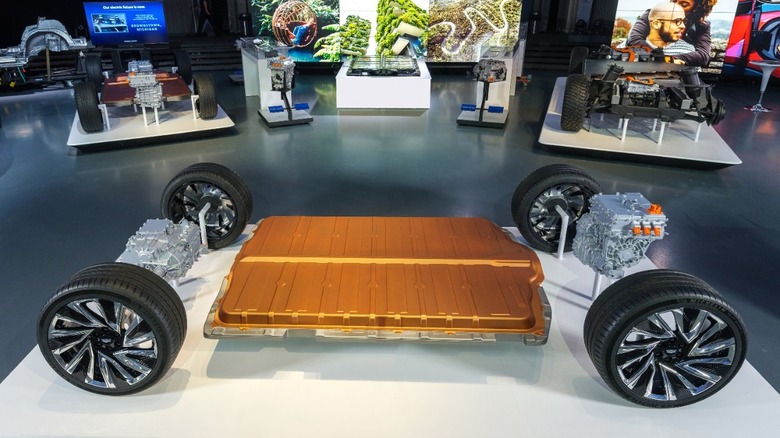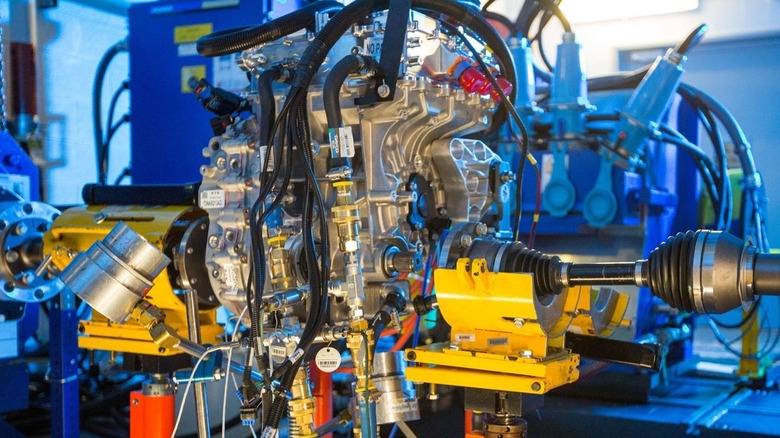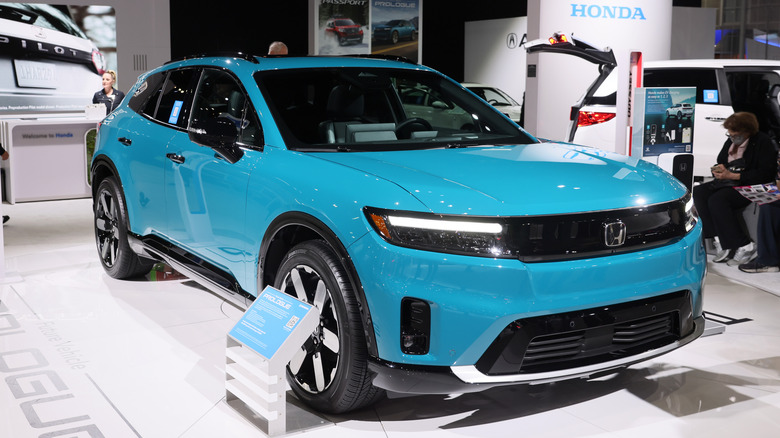Everything You Need To Know About GM's Ultium EV Platform
General Motors developed its scalable EV architecture called Ultium so that it could build dedicated electric vehicles that didn't use existing internal combustion engine vehicle platforms. Most manufacturers have either launched or are working on a bespoke EV platform because this is a key step in being able to offer electric models with competitive range and performance numbers.
Ultium isn't a platform in the same sense as defined by other manufacturers. Usually, the image of a skateboard containing the battery pack, motors, and electronics is conjured up when talking about an EV platform, but that's not the case with Ultium.
GM puts its Ultium EV tech in a variety of vehicles with different frame sizes, ranging from regular-sized models such as the Chevrolet Blazer EV to the body-on-frame GMC Hummer EV. It even powers the BrightDrop Zevo 600 electric van. All of these vehicles have Ultium batteries, motors, controllers, and all the other vital electronics, but the platforms themselves are not related.
Not following the industry trend of tying its EV tech to a single platform, GM is allowing itself the freedom to implement it in a broader spectrum of vehicles. Back in 2020, when it officially unveiled Ultium, GM said it was envisioning as many as 19 different battery and drive unit combinations for various applications in front-, rear-, and all-wheel drive vehicles of different sizes.
Batteries
The most important part of the Ultium package is the batteries. They feature cylindrical cells, like the one in your laptop battery, each capable of storing 0.37 kWh of energy, and they are usually arranged in 24-cell modules (with the cells either vertical or horizontal depending on the space constraints of the application), totaling 8.9 kWh.
These cells have a nickel-manganese-cobalt chemistry, and they can be found in all Ultium vehicles. You'll find them in the Chevy Blazer EV's battery pack, as well as in the GMC Hummer EV's battery pack. The Blazer EV's smaller 85-kWh battery pack is comprised of 10 battery modules, while the larger 105-kWh pack has 12 modules.
The 212-kWh pack in the Hummer EV is wired in a very complicated way, and it features 24 modules. The electric Hummer is the only Ultium EV that can run on 800 volts (only during charging), which enables it to accept 350 kW charging and add 100 miles of range in 10 minutes.
All other vehicles with Ultium batteries except the Hummer run on 400 volts, so they won't charge any faster than 200 kW, even if you plug them into a 350-kW charging station.
One cool feature of Ultium batteries is that GM has implemented a wireless battery management and monitoring system, which not only keeps an eye on cell health but can also be used to implement changes when the manufacturer launches updates.
GM was one of the first manufacturers to implement this, starting in 2022, and it has enabled cost savings in the manufacturing process of the battery pack, since it doesn't require each cell to be physically connected to be monitored.
Motors
General Motors has created three different motors (known as drive units) to use in its Ultium vehicles: a permanent magnet motor for front-wheel drive applications, a larger motor of the same type for use in front- and rear-wheel drive vehicles, and a smaller induction motor that can be on the front or back to serve an assist function. These motors are used in various combinations in GM Ultium vehicles, depending on the model or trim level.
The top-of-the-range Chevy Blazer EV SS packs a dual-motor configuration with a combined rating of 557 horsepower. It uses one of the smaller permanent magnet motors to drive the front wheels and a larger one for the rear, and it can accelerate to 60 mph from a standstill in under 4 seconds. One quirk of the Ultium architecture is that it allows GM to offer models like the Blazer EV with front-, rear-, and all-wheel drive. This is unusual in the automotive sphere, since specific car models are usually either front- or all-wheel drive, and rear- or all-wheel drive.
Powering the top version of the GMC Hummer EV is a trio of Ultium electric motors. One in the front, and two in the rear. Together, they make 1,000 horsepower and give the 9,000-pound Hummer alarming straight-line performance — 0 to 60 mph in 3 seconds.
Models
General Motors launched the Hummer EV in 2021 as the first in its line of Ultium EVs, followed by the BrightDrop Zevo 600 that same year. Cadillac introduced the elegant Lyriq electric crossover in 2022, and 2023 saw the arrival of the Chevrolet Silverado EV and Blazer EV models. Buick also introduced two Ultium-based EVs in China, the Electra E4 and Electra E5, with no announced plans to offer them in America.
Next year will mark the debut of the Acura ZDX and Honda Prologue EVs, both of which are Ultium-based electric models built on the GM BEV3 platform shared with the Blazer EV. They will be manufactured in GM facilities in the US and Mexico, respectively. The fully electric Cadillac Escalade IQ is also set to debut in 2024, and production is also expected to commence for the very exclusive Cadillac Celestiq flagship EV and the GMC Sierra EV Denali.
All these models are part of GM's massive $35 billion investment in electric vehicles, which the manufacturer expects to produce 30 new global EVs by the middle of the decade.



